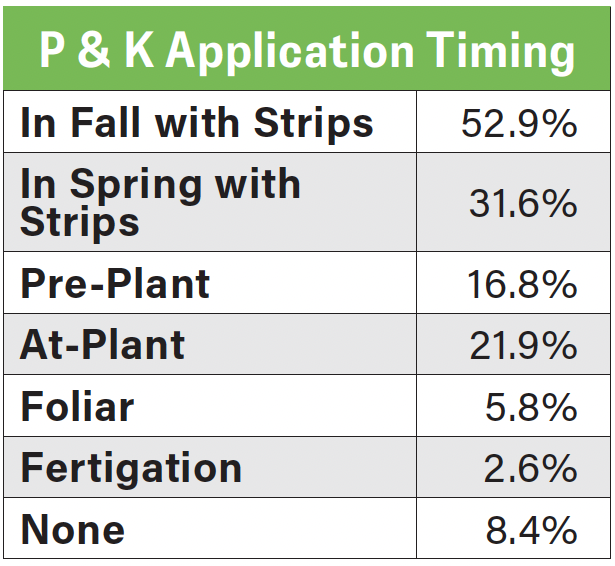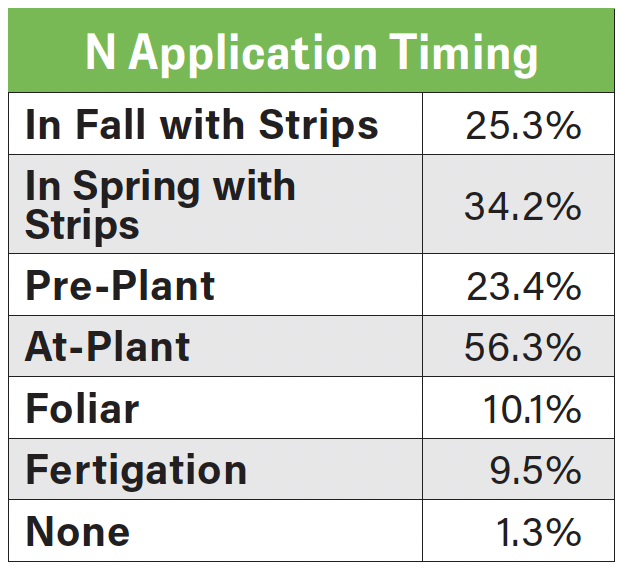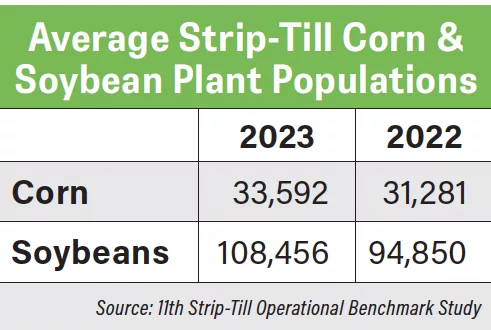With so many uncontrollable factors contributing to the success of a strip-tiller’s crops, maximizing the controllable can boost yields, especially for corn.
“Corn yield is a product function of how many plants per acre, how many seeds on each plant and the weight of each individual kernel,” says Fred Below, researcher and crop physiologist at the University of Illinois. “You have to increase at least one of those to increase yield. Which one does the grower have the most control over? Plant population.”
Corn Populations
The 11th annual Strip-Till Farmer Operational Benchmark Study indicates the average plant population for strip-tilled corn was 33,592 in 2023, up from an average of 31,281 in 2022. Plant populations were as low as 20,000 and as high as 44,010 for strip-tillers in 2023, according to the survey. Iowa State’s Guide to Iowa Corn Planting determined the maximum corn plant population tends to be near 35,000 plants per acre for any tillage type.
But Below says strip-tillers can likely use a population higher than that. Putting nutrients in a strip directly below the seed allows strip-tillers to manage more plants, plus strip-till conserves more water because of the residue next to the strip.
“I’m going to guess that most strip-tillers are using 30-inch rows, and a top-end population for 30-inch rows is 38,000 plants per acre,” Below says. “The population depends on rainfall, geography and water-holding ability, but I think strip-tillers are able to push the top-end population for a 30-inch row more than conventional tillage farmers are.”
Better nutrient placement and water-holding capacity also means strip-tillers will likely have better success with variable-rate seeding than conventional tillage farmers, according to Below. He recommends strip-tillers vary their rates based on water availability primarily, followed by nutrient supplying power.
“The main detriment of running up the population is you are worried about not having enough water and the plant lodging,” Below says. “Strip-tillers can put the phosphorus (P) and potassium (K) right in the strip. Both of those are huge advantages, especially the K, for standability and a little bit for water because K moves water to the strip zone.”
The 2024 survey found about 56% of strip-tillers apply nitrogen (N) at plant, the most common application time. While more than half of strip-tillers apply phosphorus (P) and potassium (K) in fall with their strips, about a quarter put down P and K at plant.
“That’s how they might be able to get out a little extra yield — because they’re placing the nutrients in the strip,” Below says. “My view is the advantages of strip-till give growers the option to manage the higher population of plants, and plant population drives yield.”
Soybean Populations
The average soybean plant population was 108,456 in 2023, according to the survey, up considerably from an average of 94,850 in 2022. Although soybean plant populations increased from the 2023 survey, Below says many strip-tillers are dropping their seeding rates, as they continue to plant premium, treated seed, so the soybean plants can branch.
Below says conventional tillers are likely planting 140,000 where they’re looking for 120,000 plants, but strip-tillers can get by with a lower population. He says the sweet spot for strip-tillers is likely 110,000-120,000.
“It’s slowly edging down,” Below says. “We’re seeing soybeans planted earlier and earlier because the uniformity of emergence isn’t as important as it is with corn. When you plant early and you have too many seeds, then the soybeans get too tall.”
“Less is more” was the theme for Smithville, Ga., strip-tiller Alex Harrell, who achieved a world record-breaking 206-bushel soybean yield with a seeding rate of 85,000 in 30-inch rows.
“If you get itchy to plant, plant soybeans first,” Below says. “More corn, less soybean. That’s the message.”










